Lost in Translation: The Social Language Theory of Neurodivergence (By Trauma Geek)
Reprinted with permission from Janae Elisabeth of Trauma Geek. Originally published on Medium.com.
I was so blown away by this article when I read it, I knew I had to reprint it and immediately contacted the author for permission. I’ve never read a clearer, more comprehensive explanation of why autistic people and neurotypical people misunderstand and confuse each other so much.
– Jaime A. Heidel

“Reality simply consists of different points of view.” – Margaret Atwood
We are genetically different. We experience the world through a hypersensitive nervous system which informs every aspect of our thinking, our behavior, and our social values.
The dominant social group labels our way of being in the world as disordered because they don’t understand us. Even though they don’t understand, the dominant culture controls the narrative about our differences.
Society believes the experts who are not part of our culture, who see brokenness where there is order. We gradually start to believe the myths ourselves and lose all sense of self-esteem. We come to hate ourselves for being different.
How did we get here?
The pathology paradigm is a system of diagnostic labels designed by neurotypicals which categorizes our genetic differences and traumatic stress responses as illnesses, disorders, deficits, and deficiencies. Some of these labels are ADHD, dyslexia, dyspraxia, epilepsy, autism, bipolar, borderline, schizophrenia, and complex PTSD.
Up until now, scientists have studied us like they study animals — not asking our opinion or considering that there may be a complex system of mind behind the behaviors that they do not understand. They theorize that we are less empathetic, less aware of others, less social. More like robots than people.
They have largely not tried to understand the biological mechanisms that create our experience of self. Instead they have tried every means possible to force us to act neurotypical.
Some of us can pretend to be neurotypical, for a while, at great cost to our health and happiness, but we cannot change our neurotype. We are neurodivergent.
Our behavior and social values are different because the way we think is different.
The way we think is different because our moment-to-moment experience of the world is different.
In this article, I’m going to explain the key ways in which neurotypical and neurodivergent people misunderstand each other.
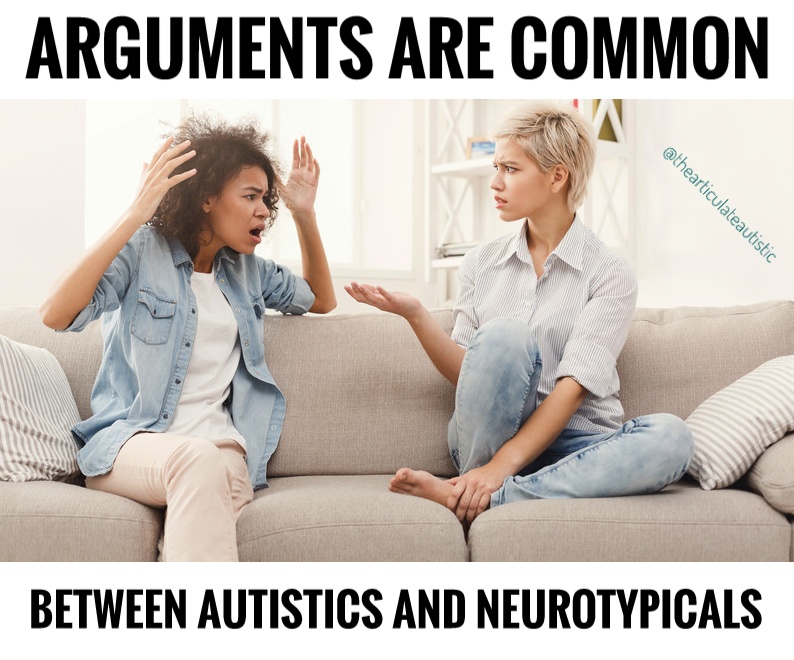
Processing differences cause us to speak different social languages.
Neurotypical and neurodivergent people experience many misunderstandings or blocks to communication. It is common for both groups to assume that these misunderstandings happen because of a deficit or deficiency in neurodivergent people. However, neither group is at fault. We are simply speaking different languages.
Dr. Damian Milton calls this phenomenon the double empathy problem. He says, “Simply put, the theory of the double empathy problem suggests that when people with very different experiences of the world interact with one another, they will struggle to empathise with each other.”
Recent research from the University of Edinburgh demonstrates the double empathy problem in more detail. Through a series of conversations and social exercises, they found the following facts about autistic social communication.
1. Autistic people share information with other autistic people as effectively as non-autistic people share information with other non-autistic people.
2. Information sharing can break down when pairs are from different neurotypes — when there is an autistic and a non-autistic person.
3. Autistic people have higher rapport with other autistic people, and non-autistic people have higher rapport with non-autistic people.
4. External observers can detect the lack of rapport apparent in mixed interactions (interactions between autistic and non-autistic pairs).
These four facts are a notable contradiction to the clinical definition of autism, which focuses on communication deficits and social challenges. Scientists are learning that autistic people actually communicate and socialize quite well with other autistic people.
Neurodivergent people have been stereotyped as having difficulty with understanding other people’s thought processes, a skill called mindreading. However, neurotypicals also experience mindblindness when communicating with neurodivergent people.
Simon Baron Cohen’s theory of autism did not account for the fact that lack of understanding goes both directions.
If we think of neurodivergent and neurotypical people as speaking different social languages based on very different experiences of the world, the findings of this study make sense. Here are 8 specific ways in which neurodivergent and neurotypical social languages differ. (There are more ways, but 8 is enough for today. I’m an autistic person obsessed with the intersection of neurobiology and sociology, so I’ll probably write more about this in the future!)
1. Emotions
We process emotions differently. We think of emotions in extremes because we feel and sense in extremes. Happy is elated. Sad is distraught. Grief is the end of the world. Light, sound, touch, taste, and smell have an emotional effect on us. We sometimes have to turn off our emotions in order to protect ourselves from overload. This is not because we cannot feel; it is because we feel SO much all of the time.

We are good at recognizing emotions when they are congruent — when the expression of the emotion matches the situation. We may enjoy spending time with children or animals and be able to understand intuitively how they are feeling. When emotions are incongruent, neurodivergents tend to rely on facial expressions, while neurotypicals tend to rely on situational cues. Interacting with neurotypicals can be especially stressful if we are expected to prioritize situational cues, which feels unnatural to us.
Motion is essential to our emotional processing and helps us express our feelings. We stim: tap, dance, flap, bounce, spin, rock, and wiggle, in order to stay in touch with our Inner Selves and our intense emotional world. When we are not allowed to do these things, we shut down on the inside and outside.
2. Empathy
There are two kinds of empathy: affective empathy and cognitive empathy. Affective empathy is feeling the feelings that another person is experiencing. Cognitive empathy is knowing the thoughts that are in the other person’s head, how they think about their feelings, and what they might do in response to them.
Neurodivergent people tend to have high affective empathy and low cognitive empathy. The inverse is true for neurotypicals. (Some people have a high degree of both types of empathy, because they have practiced and learned the type that does not come as naturally to them.)
A neurotypical person’s confidence that they can know what another person thinks can be baffling to us, just as our confidence that we can know what another person feels can be baffling to neurotypicals.
People who think of themselves as empaths tend to be neurodivergent people with very active mirror neurons. We may easily absorb the emotional feeling state of others, lose touch with our own feelings, and become confused or overwhelmed by the variety of emotional signals in large crowds of people.
3. Nonverbal Communication and Body Cues
“Energy is our first language. Words are our second.” That’s how autistic activist Kristy Forbes describes herself and her children. She is an autism and neurodiversity support specialist who teaches parents & educators how to understand neurodivergent children.
“We are hypersensitive to the energy of other people. Much like other living beings that don’t have spoken words as their communication, we can communicate in other ways.” She says her children let her know how she’s feeling by their behavior, because they are so sensitive to her energy.
Neurodivergent people can usually understand each other’s nonverbals even though we struggle with neurotypical’s nonverbals. We take deep meaning from every aspect of a person’s observable body language, including microexpressions and tone of voice. We intuitively understand people because we feel their energy. This sensitivity to nonverbal cues makes us very understanding carers for animals and small children.
Neurotypicals follow a hierarchy of meaning, placing spoken words at the very top, and sometimes ignoring other kinds of communication completely. I’ve worked with families of nonverbal children who ask, “When will they be able to communicate with us?” When these parents start to recognize that behavior is communication, a whole world of connection opens for the child.
4. Words Mean Things
Words are a big deal to us. They’re emotional, mental, and physical work. Many of us learn to conserve our energy by reducing the amount of time we spend speaking. This is one of the ways we adapt to our intense world. Many of us have situational mutism. Some of us never speak out loud, but instead communicate with sign language or assisted communication devices.
Because words are work, we appreciate deep meaning in a short message. Details matter to us. We expect people to say what they mean and mean what they say.
We often misunderstand colloquialisms, metaphors, and innuendo because we are so literal. The children’s book series Amelia Bedelia, which features a babysitter who takes every word quite literally, offers a memorable example of the way we understand words.
[“Amelia Bedelia,” asked a reporter, “what would you do if you were in the mayor’s shoes?”
“I would polish them,” said Amelia Bedelia. “They could use a good shine.”]

Neurodivergent directness lends itself to a particular kind of humor that disrupts the default understanding of a word or concept. Amelia Bedelia is far from the only example. Have you seen Hannah Gadsby’s groundbreaking stand up comedy show Nanette on Netflix? Hannah is autistic, and it shines through in every part of her comedy including her break from the traditional form.
5. Social Rules
Whenever we gather groups of neurodivergent people together, the idea that we can’t socialize well begins to seem rather silly. We certainly don’t socialize like neurotypicals do, but we have our own set of social rules as well as consequences for breaking them.
We don’t do small talk. We enjoy parallel play and shared activities that don’t require continual conversation. When we talk, it gets deep quickly. We discuss what’s real, our struggles, fears, desires, obsessions. We appreciate a good infodump, and there’s no such thing as oversharing. We swap SAME stories — sharing a time when we felt similarly in our own life, not as a competition, but to reflect how well we are listening to each other.
As a group, we don’t tolerate bullies or power games. We are naturally suspicious of people who claim leadership, and we may intentionally exclude people who try to control or dominate others. We usually respect each other’s sensory needs, and we automatically pull away from those who don’t understand our needs.
Neurotypical experts have called all of these ways of socializing inappropriate, but they work for us. Who gets to decide what is appropriate?
6. A Different Value System
We value achievement, success, and hard work, but we tend to define these things differently from neurotypicals — more by internal metrics and less by external rewards. Fame, competition, and material wealth don’t impress us. We prefer to measure success in terms of autonomy, justice, connection, and truth.
We make deep connections with animals, objects, and hobbies, in addition to people. What looks like introversion and antisocial behavior is actually a preference for a certain kind of human connection, an energetic feeling of kinship. We may heavily rely on social media networking sites for a sense of social connectedness, and bristle at suggestions that what happens online is not real life.
We are suspicious of incongruence or posturing, and we bluntly tell the truth as we see it. Truth is so valuable that we will even risk relationship for it. We are the voices who point out the obvious — the emperor isn’t wearing any clothes.

We have a long history of activism, disruption, and revolution. Greta Thunberg is a prime example, crediting her neurodiversity for her climate activism. She said, “If I didn’t have Asperger’s, I would be stuck in the social game that everyone else seems to be so infatuated with. I see the world in a different way, with a different perspective.”
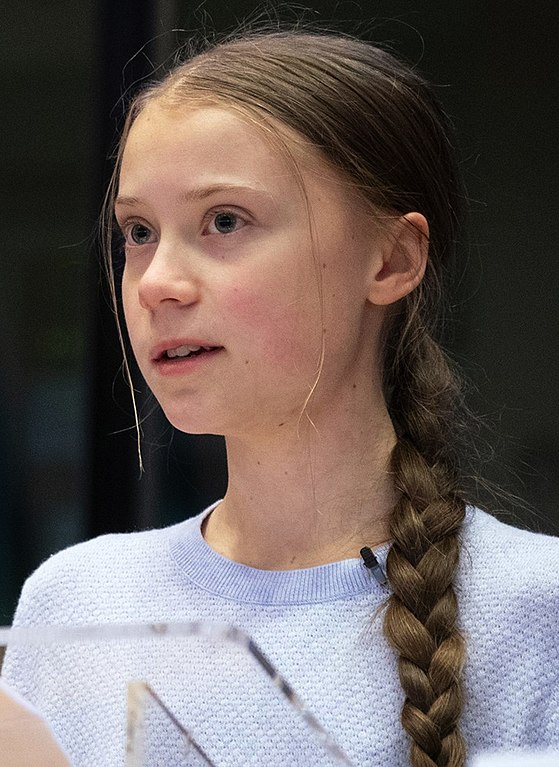
Masha Gessen puts it this way: “If you simply can’t do doublethink, if your brain explodes, then it is less discomfiting for you to become a dissident than to exist within a society. For most people, it’s more comfortable to do whatever you’re required to do. If it requires doublethink, it requires doublethink. But if you just can’t do doublethink, then you become a dissident.”
7. Skills and Abilities
We have variable skills and abilities. Our strengths and disabilities fluctuate based on our environment and stress level. We may be able to work and visit the grocery and make dinner one day, and be unable to leave the bed on other days. We can happily socialize in some settings but not others. Many of us have chronic illnesses or trauma that interact with our sensitive neurology to cause unusual levels of pain and fatigue which change our abilities from day to day or even hour to hour.
It is unfortunately very common for professionals to disbelieve our reports of having pain or disabilities in other environments, when we present in clinical and educational settings as calm, clear communicators.
They assume our day to day skills will be consistent, but they assume wrongly. What they are missing is our mask. Masking is an evolutionary adaptation to othering and lack of belonging.
Under extreme stress, we force ourselves to appear neurotypical as much as possible. We grow up learning how to minimize hateful or abusive reactions to our differences by pretending we aren’t different at all.
We find freedom in recognizing how much our skill levels actually vary and dropping the mask when it’s safe to do so. Sensory aids and assisted communication devices allow us to overcome a number of challenges of modern society. But even with these, there will be times we can’t do things that are expected of neurotypicals.

We spend a lot of time managing our energy levels, noting what nourishes and what drains us, because we have to. If we stop paying attention to our energy resources and nervous system state, we become ill mentally, physically, or both.
8. Reactions to Stress, Pain, and Overwhelm
Our stress reactions are not pathological, but they can be disabling. We are hypersensitive to pain, including social rejection.
As various input stimulates our nervous system, we feel increasingly anxious and uncomfortable. If we can’t stop or change the stimulus, then a meltdown is our natural release valve. In meltdown, our sympathetic nervous system discharges built-up energy.

If the energy in the body is overwhelming and meltdown doesn’t feel safe or accessible, shutdown happens. In shutdown, the dorsal vagus nerve disconnects us from the world to protect us. This state is where the old deficit theories of autism originate. When everything is too much, we may appear to daydream, stare blankly, or avoid social interaction — not because we don’t want interaction, but because our body has reached its input limit.
We’ve maxed out our CPUs so to speak.

Meltdowns and shutdowns may be misidentified as panic attacks and PTSD avoidance, because so many of us have trauma on top of our genetic neuro-difference. Trauma responses make up a large portion of the current diagnostic criteria for autism and ADHD, but phobias, anxiety, depression, agitation, insomnia, hostility, hypervigilance, self-destructive behaviors, and social isolation are not inherent parts of who we are.
Trauma around how people respond to our meltdowns and shutdowns often leads to self-harm, particularly if we were punished for these states as children. We might reenact behavior we have received from others by hitting ourselves or otherwise causing pain in an attempt to stop our natural reactions to overwhelm.
Our stress responses are a normal part of feeling so intensely. When we develop shame around these reactions, they can become dangerous to our health and others. Finding safe ways to allow ourselves to meltdown and shutdown is quite healing.
Conclusion
The majority of the impact of all of these misunderstandings falls on us neurodivergents. NTs are the in-group, while the rest of us are made to feel like we don’t belong. Interactions with NTs can make us feel stupid, even though we are quite intelligent.
“I feel like a foreigner who memorizes all of the customs of another culture. I try SO hard to communicate in the right way, but important things get lost in translation.” — an autistic adult
It’s important for us to know that we are not broken neurotypicals. The set of traits that Western society has decided is “normal” is simply unrealistic for our neurotype.
The best way to improve communication with your autistic loved one is to understand how your autistic loved one’s mind works! Intentions, motivations, and personal expressions (facial expressions or lack thereof, body language, etc.), are often quite different in autistic people than they are in neurotypical people.
Experience a better understanding of your autistic loved one by reading books about life from an autistic perspective as well as stories that feature autistic characters. You’ll have so many “Ah ha!” moments and start seeing your autistic loved one in a different light (and you’ll have a better understanding of their behaviors, which you may have been misinterpreting up until now).
Books I recommend for a better understanding of your autistic loved one:

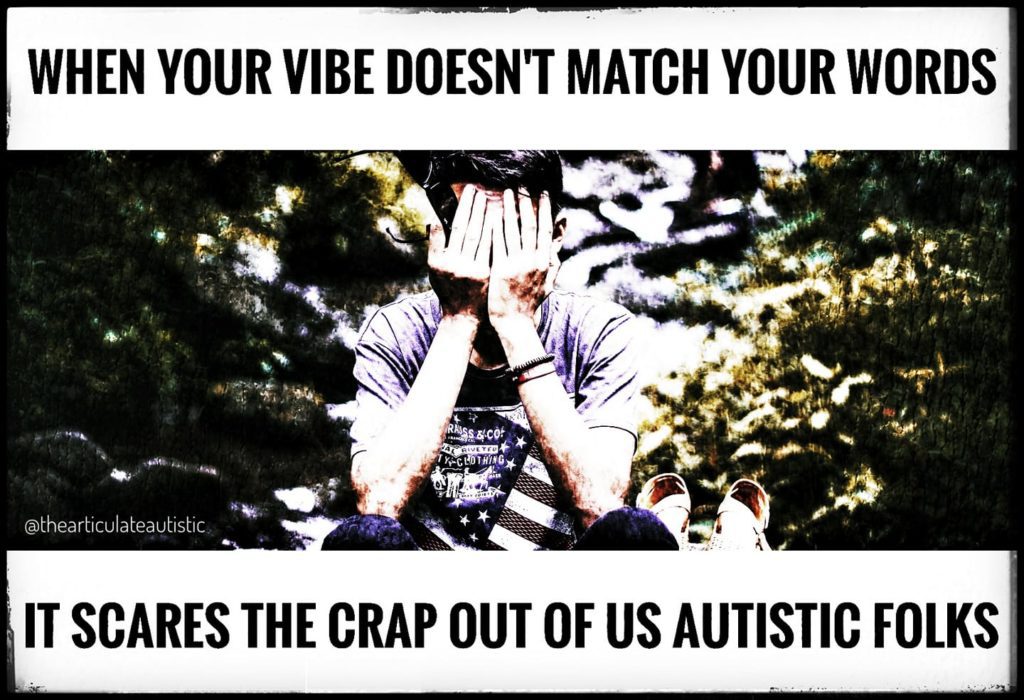
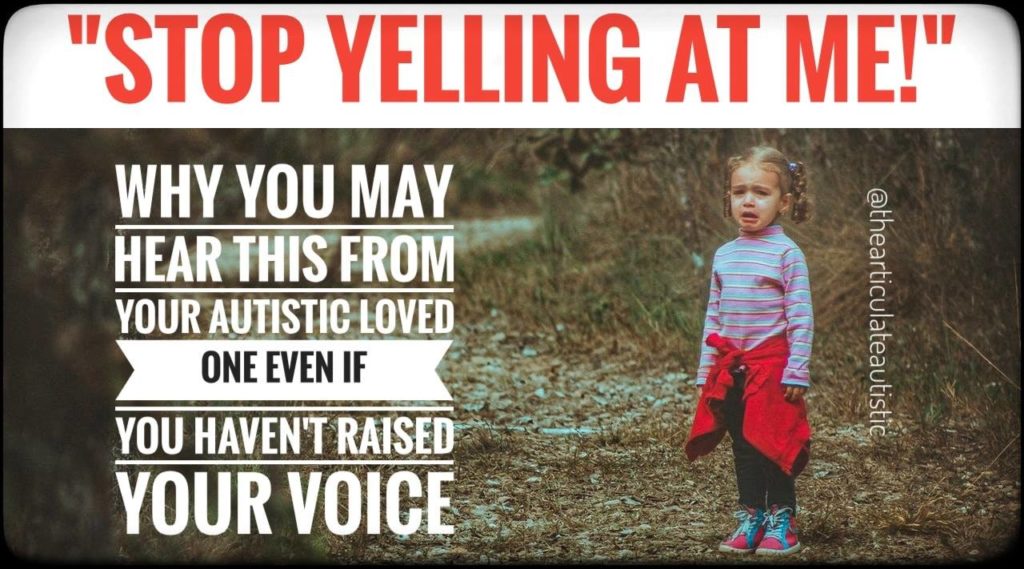
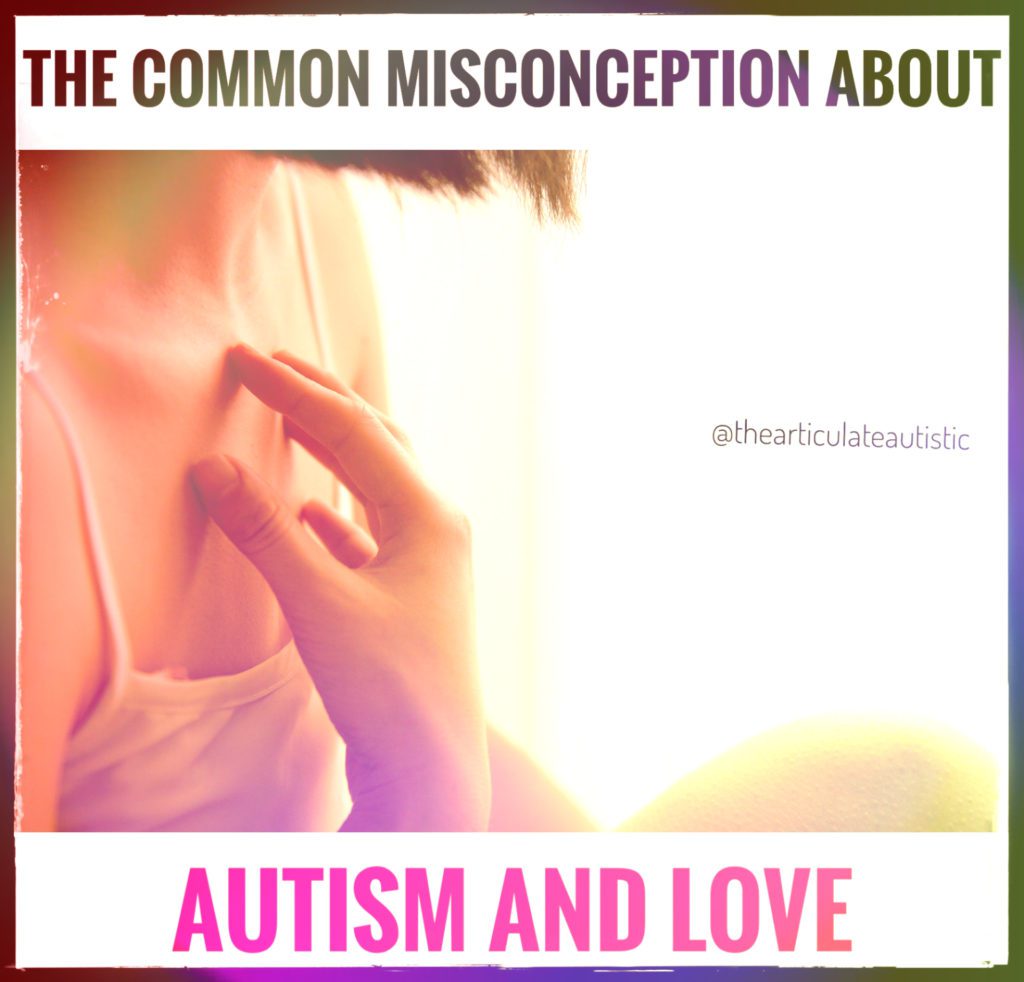




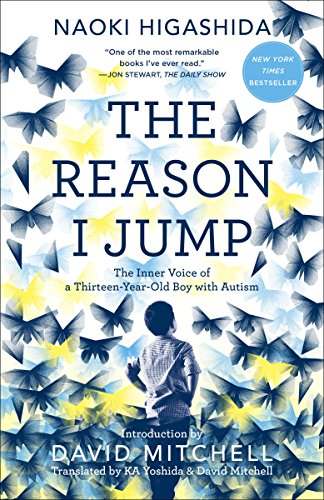






This article speaks to me personally as an autistic woman, very recently diagnosed, at the age of 51! I have struggled all my life to come to terms with my ‘difference’, and to get a diagnosis of any kind. I have had to fight so hard to be heard, and to accept myself and not punish myself for not fitting in. I’ve struggled at work in particular; with managers who just don’t understand my communication style, and with outright bullies. This is why, despite holding two degrees and good experience, I find myself unemployed and penniless. The only escape I have from this situation are my two gorgeous, intuitive cats, and my poetry, which I now understand is the perfect literary form and outlet for me. It is concise, concentrated and intense: exactly how the autistic universe works (for me anyway). I recently published my first poem about autism, and it as available online here: http://heroinchic.weebly.com/blog/autistic-i-by-claire-sexton
Claire, thank you so much for your comment! I understand how frustrating and difficult it is to speak a different language, so to speak, and not even understand that’s what you’re doing until you finally read on the subject, get a diagnosis, or both.
Thank you so much for this eye opening article. You’ve articulated what I’ve intuitively sensed without being able yet, to put into words myself. I’ve self identified very recently as autistic at the age of 76. It’s given me a new and exciting lease of life. At last I can enjoy being me!
You’re welcome. I didn’t write the article, but I’m so grateful to Janae Elisabeth for writing it and letting me reprint it here!
thank you for sharing..it’s brilliant..from an old lady autistic (hehehe)
You’re so welcome! Thank you for your comment.
I am a neurodivergent person, I am Mexican and in my country late diagnosis of our condition is being very common. I am 45 years old and I found this path through my son’s diagnosis. Thank you very much for sharing this information so clearly.
You’re very welcome. While I didn’t write this particular piece, I’m glad you found it and found it helpful.
I am so impressed with this article! I am a self-diagnosed Aspie and I love it! I learned this is my super power! It explained my whole life, I’m now 65. I couldn’t keep a job for years unless I was self-employed. This article will help me explain to my wife how I think, she’s NT’s.
I’m so glad you found it helpful!
I’m 30, I’ve been diagnosed with ASD for 18 years, along with a plethora of other disabilities, Neurotypical’s in society would often refer to me as an “high functioning intelligent individual” though I would not necessarily perceive myself as “high functioning” at all and unfortunately remain unemployed. However this piece of writing has to be one of the most validating and well articulated pieces I’ve read on autism, It speaks to me on a personal level in many ways that I experience struggles with in day to day life.
Truly an impressive piece.
Thanks so much much for this article and many others I have been reading. I am NT but highly sensitive/empathetic and have come to realise in discussion with my husband over the last few years that both he and my youngest of four children are undiagnosed Austistic. My two sons are diagnosed ADHD and I have one NT child. Communication in our household has always been challenging but done in love and I’ve become conscious over many years of trying and often failing that it is also my responsibility to adapt and try to understand communication from another person’s perspective. We have been married 28 years and are still best friends. I have recently studied to become a counsellor and it is my heart to give a hope to everyone I come across that they will be heard and accepted for who they are in a safe space. I read all I can from the perspective of Neurodiversity so as to hopefully broaden my understanding. I hope what I say will encourage other readers that there are many NTs out there who are trying!